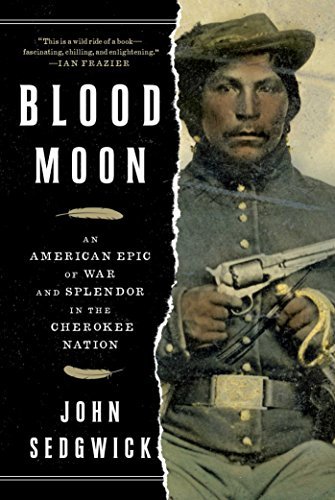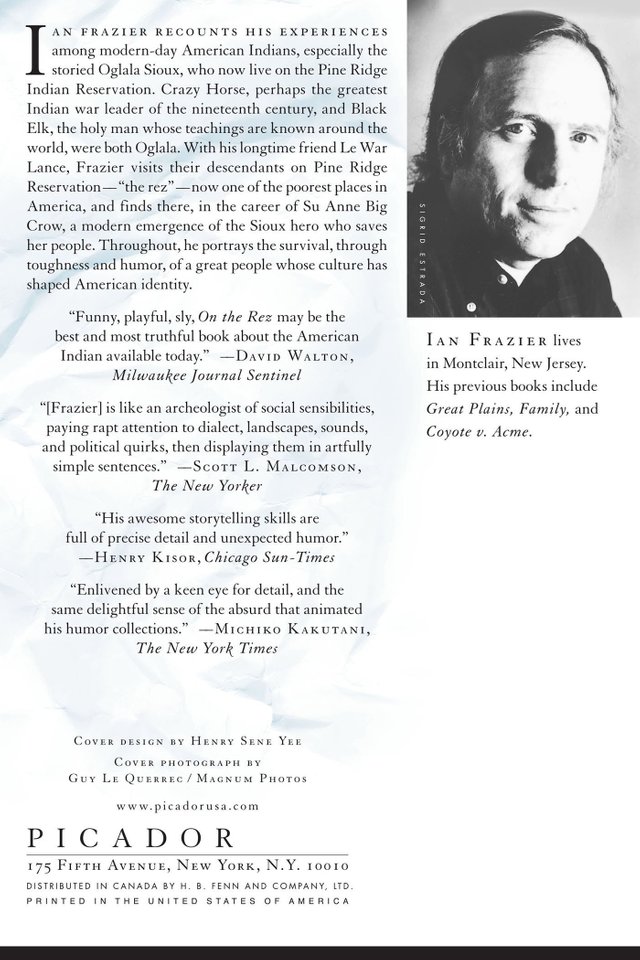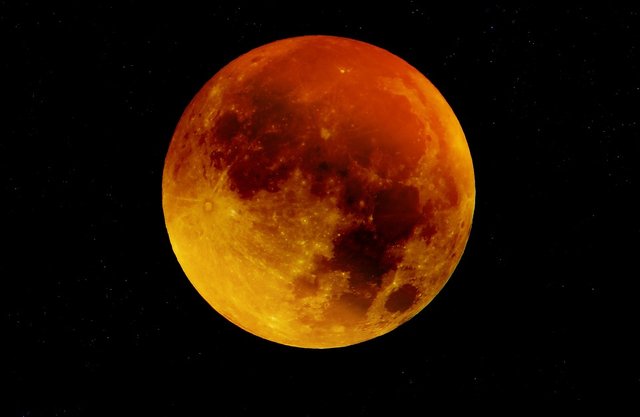'Blood Moon' by John Sedgwick (Keangrooview, 21-March-2018)

With a Blood Moon looming
at the end of January, I requested an ARC of this book via NetGalley. Who could resist that title, that image on the cover?
Three months later, I've finally finished reading this tale, which is riveting, compelling, heartbreaking, and splendidly written. What took me so long?
Terrible things happen
in this story, and they happened in real life, which makes me stop reading until I can summon the strength to come back for more. John Sedgwick has a gift for taking dry, dead history, breathing life into it, and spinning a tale of human passion and conflict, the stuff of great fiction. But it's not fiction, and I wish it were.
Blood Moon: An American Epic of War and Splendor in the Cherokee Nation is splendid and epic, as the title promises. A history book that reads like fiction, "Blood Moon" brings to life the people who came before us. I'm amazed at the quantity, depth, and detailed research that went into this epic story of the Cherokee Nation. I had read and loved James Upton Terrell's "The Navajos"(1970) for the same kind of storytelling miracle. Years later I continue to remember Zarcillos Largos and how he died. Now, I will remember The Ridge, and Boudinot, and John Ridge, and the terrible ways they were killed.
My Kindle is packed full of highlighted names, dates, quotes, and information. It has taken me a long, long time to read this, and I still haven't read every page.
"Meteorologists now see that a blood moon is actually lit by an unusual sunset glow picked up form the earth's atmosphere as the sunlight brushes past," Sedgwick explains in "A Note on the Title." The Cherokee, however, saw the blood moon as "an ill portent. The moon was red with rage over what lay below."
Outsiders wrote and recorded most of what we know about the people who lived here before the Declaration of Independence launched a new nation. Sedgwick draws extensively from James Adair's "History of the American Indians," the first "and still the best" account of the Cherokee (never mind Adair's obsession with using his observations as evidence that American Indians were a lost tribe of Israel.)
Sedgwick writes,
Adair was there one night when the moon disappeared from the sky during a lunar eclipse, and he had never seen the Cherokee in such squawking pandemonium. 'They all ran wild, this way and that, firing off their guns, whooping and hallooing...and making the most horrid noises that human beings possibly could.' They were afraid the moon was gone forever, devoured, they decided, by a monstrous bullfrog in the night sky.
I especially love Sedgwick's brief history of Native Americans, or Indians, the term he uses throughout the book. On one side of the globe, people built the Pyramids, the Great Wall of China, the Parthenon; they created vast empires, and lost them; they invented writing, math, science, the printing press, musical instruments, politics, literature, fine china, table linens, jewelry, and all that. On the other side the globe, "maybe 20,000 years ago, when a few audacious souls ventured across the Bering Strait during an ice age," various tribes evolved in North America. Until 1492, the people on one side of the world had no idea the other side existed.
Much of this history is already familiar, one would hope, to most readers. The smallpox epidemic, however, is described here with more explicit horror than I'd seen anywhere else.
Sedgwick barely mentions a concept that Ian Frazier expounds on, in On the Rez,

I had heard of the British accepting the American terms for peace in Paris in 1783, but of a man named Dragging Canoe, I recall nothing from my college or high school history books. The Cherokee were allies of the British? Somehow I missed a lot of these intriguing details, most likely because they were never mentioned. Not in the small Midwest town of the 1970s where I was schooled.
The history, the details, the people, the sense of time and place, are all captured in vivid detail in "Blood Moon," and it would take me all day and all night just to summarize this one slice of American history.
War and Splendor
in the same sentence may seem antiquated or oxymoronic to modern readers, schooled as we are in ideals of discourse instead of weapons. But the opening pages cannot fail to stir us, with prose that some would dare call purple, "This is the last big surprise of the Civil war: it was fought not just by the whites of the North and South, and by the blacks who mostly came in after the Emancipation." It was also fought by some 30,000 Indians, from the Seneca to the Seminole.
"Shaped by a warrior culture, most were used to violence, and they took to battle. Their long black hair spilling out from under their caps, their shoddy uniforms ill-fitting, their faces painted in harsh war colors, they surged into battle with a terrifying cry, equipped not just with army-issue rifles but also with hunting knives, tomahawks, and, often, bows and arrows. Even when mounted on horses, they exhibited a deadly aim..."
Where are the pictures of that? Why do U.S. History classes overlook such an awesome episode while reciting dull summaries of idiotic battles where men shoot each other with cannons at close range or march toward each other in rows, mowing each other down with bullets? I hate war, the reasons for war, the methods, the casualties, the tombstones, and the documentaries my husband watches.
But I love the skill and ferocity of our Native Americans, though I wince and cringe at the blood they shed, the scalps they raised to the sky. My dad's black and white TV Westerns never came close to capturing it, so it can only be the storyteller's gift of inspiring me with these images. Starting with "Black Elk Speaks," as the great Oglala Sioux warrior told it to John G. Neihardt, I moved to "Geronimo," the "Custer Died for Our Sins," "Bury My Heart at Wounded Knee," on to the Navajos, and more, becoming increasingly outraged by America's lack of attention to Natives in our history books, political campaigns, movies and TV shows, not to mention a conspicuous absence of Natives in our every day lives, in most parts of the country.
In popular music, the 1960s gave us "Cherokee Nation" (proper title, "Indian Reservation") by Paul Revere and the Raiders. Lead singer MarkLindsey, who also produced the song, is part Cherokee. This youtube video begins with photos of Natives from other tribes and drew the usual variety of interesting comments from viewers. (You all know how I love reader/viewer feedback.)
I have said nothing about the stars of this book John Ross, his rival The Ridge, The Trail of Tears, the treachery, the battles, and the assassinations. It has taken me three months, on and off, to get through these bloody pages. Also, this ARC (Advance Reader Copy) comes with a DISCLAIMER from Simon & Schuster: Do not quote for publication until verified with the finished book.
And so I will offer just my impression of this story as a magnificent addition to my library, and to any library anywhere, and I would make it mandatory reading if I were a history teacher.
What student wouldn't love history class, if more history books read like fiction, full of passion and conflict, with unforgettable and richly drawn characters?

Thank you to John Sedgwick, Simon & Schuster, and Netgalley, for the opportunity to read and review this book.
And ditto the praise of others, e.g.,
John Sedgwick has captured and brought to life
one of the most dramatic untold stories of nineteenth-century America: the forty-year blood feud waged between two proud and powerful Cherokee chiefs that instigated the notorious Trail of Tears and shaped the sorrowful history of the tribe even more than the reviled President Andrew Jackson. Sedgwick has been blessed with the historian’s essential gifts—the compelling ability to produce a page-turning saga combined with the insight into a tragedy that is still keenly felt today.—Bob Drury and Tom Clavin, authors of The Heart of Everything That Is
This is a wild ride of a book—
fascinating, chilling, and enlightening—that explains the removal of the Cherokee as one of the central dramas of our country. The story of the Trail of Tears, and of its aftermath in Arkansas and Oklahoma, has never been told with more passion or finesse... —Ian Frazier, author of On the Rez

January 2018
is continuing to be the mooniest month we've seen in some time. Not only will we be treated to a blue moon, aka an additional full moon, on the 31st, but that day will also see a lunar eclipse. This phenomenon is sometimes known as a "blood moon," for the reddish tint the moon takes on while it's in Earth's shadow. --SARA COUGHLIN, The Second Full Moon This Month Will Come With A Dramatic Twist image source
Publisher: Simon & Schuster (April 10, 2018)
John Sedgwick is the bestselling author of thirteen books, including Blood Moon, War of Two, his acclaimed account of the duel between Hamilton and Burr, two novels, and the family memoir In My Blood. A longtime contributor to GQ, Newsweek, Vanity Fair, and The Atlantic, he wrote the first national expose of the exploits of Whitey Bulger in GQ in 1992.
My collection actually covers three rows of bookshelves, but good luck to my husband getting me to clear out any of the excess paperbacks and hardcovers piling up all over the house. How can I have two Kindles, and still no room for all these books?


Until next time,
Keangaroo
because Kean sounds like Kane (not keen, hint, hint)

@keangaroo at Discord
Find me at Twitter:
@tea_in_carolina
novelist, reviewer, editor, book critic
fan of indie authors & underdogs
Follow My Reviews at Goodreads
Find my Amazon Vine Reviews
In-Depth Reviews, Author Highlights, History, Current Events, and more at My Wordpress Blog
Perihelion Science Fiction| Let's Fry Chicken Little nominated for 2015 Pushcart Award
NetGalley

art and flair courtesy of @PegasusPhysics
